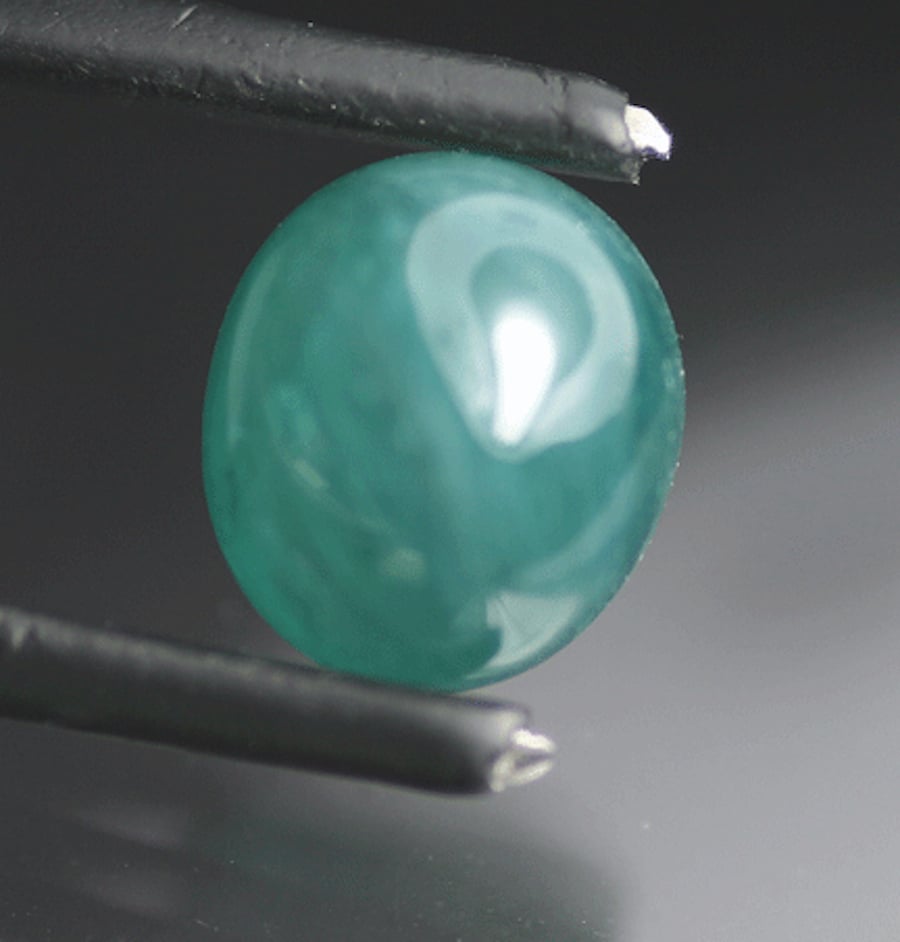Grandidierite Value, Price, and Jewelry Information
A rather rare mineral, lovely blue-green grandidierite is seldom seen in gem or jewelry collections. Translucent material is sometimes cut into cabochons. Faceted pieces are very rare, but recent discoveries of transparent material may bring more to the market.
2 Minute Read
A rather rare mineral, lovely blue-green grandidierite is seldom seen in gem or jewelry collections. Translucent material is sometimes cut into cabochons. Faceted pieces are very rare, but recent discoveries of transparent material may bring more to the market.
Start an IGS Membership today
for full access to our price guide (updated monthly).Grandidierite Value
Does Grandidierite Make a Good Jewelry Stone?
Grandidierite has a hardness of 7.5, which makes it very resistant to scratching and ideal for jewelry use. However, it also has perfect and good cleavage in two directions, which makes it challenging to cut. Of course, its scarcity has also made this a relatively little-known gemstone.
Since its discovery in 1902, most gem-quality grandidierite has been translucent. Cabochons cut from this material look very attractive and may even appear jade-like. Recent discoveries of transparent material in Sri Lanka (around 2000) and a new deposit in Madagascar (2014) have resulted in beautiful, faceted gemstones.
How to Identify a Grandidierite
Grandidierites display strong trichroic pleochroism. That means they can show three different colors depending on the viewing angle: dark blue-green, colorless (sometimes very light yellow), or dark green.
While trichroism can usually help distinguish grandidierites from other gems, lazulites can occur with blue-green colors and show colorless/blue/dark blue pleochroism. They also appear cabbed and, more rarely, faceted. Nevertheless, lazulites have somewhat higher refractive indices (RI) and specific gravity (SG). Grandidierites also have greater hardness. Keep in mind that scratch tests for hardness should only be used as a last resort to identify rough, so don't conduct this test on a finished gemstone.
Grandidierites from Madagascar may have the following properties (on the lower end of the typical range):
- RI: a = 1.583; γ = 1.622
- SG: 2.85
Grandidierites appear bluer in color the more iron (Fe) they contain. A recently discovered gemstone, blue ominelite is the Fe-analogue (Fe, Mg) to grandidierite (Mg, Fe).
Are There Synthetic Grandidierites?
Scientists have synthesized grandidierites for projects such as research into recently discovered ominelite as well as the occurrence of werdingite in pegmatites. However, there is no known use for this synthetic material in jewelry. (Perhaps this will change if grandidierites become better known).
There are no known treatments or enhancements for these gemstones.
Where are Grandidierites Found?
For many years, Cap Andrahomana in southern Madagascar, the type locality, was the only well-known source of gem-quality material. A new find in Tranomaro, also near Cap Andrahomana, has produced transparent, gem-quality grandidierites.
The Kolonne region of Sri Lanka has also produced gem-quality material.
Other sources include the following:
- United States: New York, Wyoming.
- Algeria; Antarctica; Czech Republic; India; Italy; Malawi; Repanga Island, New Zealand; Norway; Slovakia; Suriname.
Stone Sizes
As cabochons, translucent grandidierites can weigh from 1 to 10 carats and reach up to about 1 inch in size. Much material is generally opaque.
How to Care for Grandidierite Jewelry
Grandidierites have the durability to do well in any jewelry setting, but some stones may contain inclusions of crystals of other gem materials. Because of their cleavage and brittle tenacity, they may also have increased susceptibility to blows and chipping. For these reasons, avoid mechanical cleaning systems and, instead, use a soft brush, mild detergent, and warm water. Consult our gemstone jewelry cleaning guide for more recommendations.
Joel E. Arem, Ph.D., FGA
Dr. Joel E. Arem has more than 60 years of experience in the world of gems and minerals. After obtaining his Ph.D. in Mineralogy from Harvard University, he has published numerous books that are still among the most widely used references and guidebooks on crystals, gems and minerals in the world.
Co-founder and President of numerous organizations, Dr. Arem has enjoyed a lifelong career in mineralogy and gemology. He has been a Smithsonian scientist and Curator, a consultant to many well-known companies and institutions, and a prolific author and speaker. Although his main activities have been as a gem cutter and dealer, his focus has always been education. joelarem.com
International Gem Society
Related Articles
Black Diamond Value, Price, and Jewelry Information
Chameleon Diamond Value, Price, and Jewelry Information
Gray Diamond Value, Price, and Jewelry Information
Green Diamond Value, Price, and Jewelry Information
Latest Articles
Opal Buying Guide
Amethyst Sources Around the World: The Geological Story Behind These Purple Gemstones
Brazilianite Value, Price, and Jewelry Information
Ruby-Glass Composites vs Leaded Glass Clarity Enhancements
Never Stop Learning
When you join the IGS community, you get trusted diamond & gemstone information when you need it.
Get Gemology Insights
Get started with the International Gem Society’s free guide to gemstone identification. Join our weekly newsletter & get a free copy of the Gem ID Checklist!
